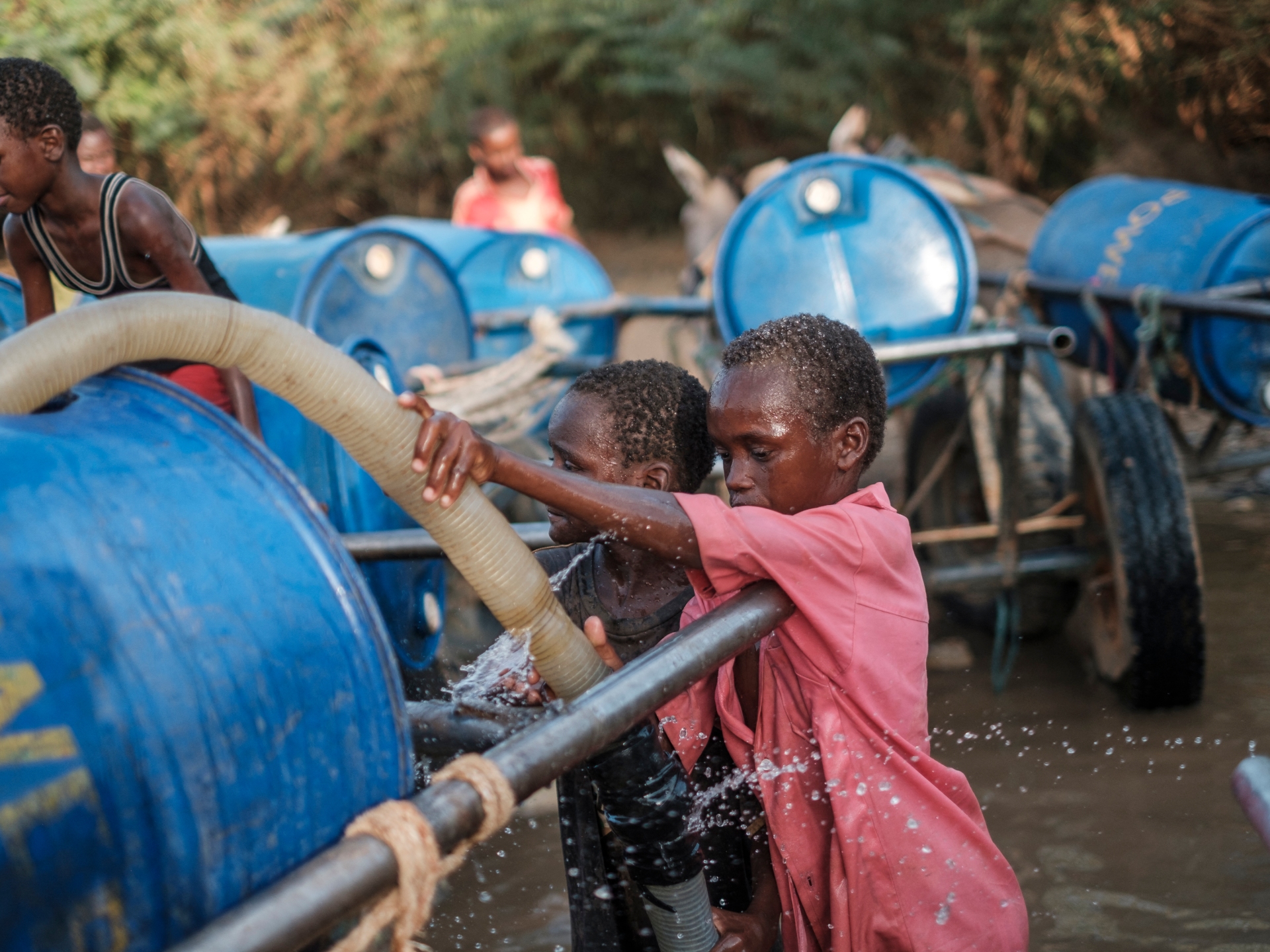Millions of people in the region are facing food shortages due to the worst drought in 40 years and rising global food costs.
The Horn of Africa region is on the brink of an unprecedented humanitarian catastrophe, the United Nations and several aid organisations have said.
Millions of people are facing food insecurity, as scientists and aid groups warned that Ethiopia, Kenya and Somalia could be experiencing their worst drought in 40 years this October-December with drier-than-average conditions predicted.
In addition to delayed rains over the past two years, the Russian invasion of Ukraine has disrupted food supply globally and led to a rise in food and energy prices in the region.
Here’s all you need to know about the situation.
What is happening?
- Over the past two years, the drought has killed millions of livestock and destroyed crops.
- More than 1.8 million children across Ethiopia, Kenya and Somalia require urgent treatment for life-threatening severe acute malnutrition. Thousands of people have also been displaced from other countries in the region like Djibouti and Eritrea.
- Last month, the United Nations’ World Meteorological Organization warned of a looming fifth consecutive rainy season, forcing more than one million people across the region from their homes in search of food and water.
How much aid is needed?
- The UN’s World Food Programme (WFP) has called for $473m over the next six months to offset the crisis. A previous appeal in February raised less than four percent of the cash needed, it said.
- Last June, the World Bank approved $327.5m to support pastoralists in Djibouti, Ethiopia, Kenya and Somalia affected by drought.
How many people are at risk of famine and death?
- In June, the World Bank said an estimated 66.4 million people in the Horn of Africa region – including 10 million children – were forecast to experience food stress or a food crisis, emergency, or famine by July.
- According to the WFP, the number of people at risk of starvation has increased to 22 million.
- In Ethiopia, an estimated 20.4 million people need food support.
- In Somalia, nearly half of the population of 15 million is “seriously hungry” and faces a “very real risk of famine in the coming months” if current conditions stay the same, the WFP said.
- In Kenya, half a million people are on the brink of a hunger crisis, and the number of Kenyans in need of assistance has risen more than fourfold in two years, the WFP said.
Who has said what?
- “The WHO is very concerned about this situation. It does lead to many families taking desperate measures to survive,” said Carla Drysdale, a spokeswoman for the World Health Organization (WHO).
- “There is still no end in sight to this drought crisis, so we must get the resources needed to save lives and stop people plunging into catastrophic levels of hunger and starvation,” WFP executive director David Beasley said.
- “We know from past experience that acting early to avert a humanitarian catastrophe is vital, yet our ability to launch the response has been limited due to a lack of funding to date,” said Michael Dunford, WFP’s regional director for East Africa.
- Martin Griffiths, head of the UN’s Office for the Coordination of Humanitarian Affairs (OCHA), said that famine was at the door”. “This is, in those often-used words, and no more true than here, a humanitarian catastrophe,” he said.
How does Russia’s war on Ukraine factor into this crisis?
- Ukraine, one of the world’s largest grain exporters, was forced to halt almost all deliveries after Russia invaded the country last February.
- The war on Ukraine has led to a disruption of global supply chains of the availability of wheat imports. That in turn, has contributed to a soaring increase in food and fuel prices.
- Under a deal brokered by Turkey and the UN, grain exports resumed in August with one ship docking in Djibouti already.
- But nonprofits say the Russia-Ukraine conflict has also abruptly drawn millions of dollars away from longer-running humanitarian crises. In June, the Norwegian Refugee Council named Somalia among the world’s 10 most neglected crises.
